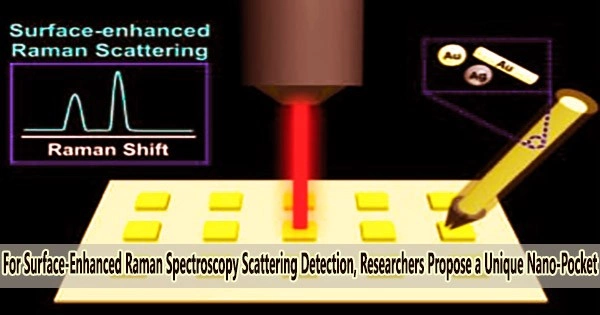A surface-enhanced Raman spectroscopy (SERMS) technique to automatically capture target molecules in AgNP/MoS2 nano-pockets has recently been developed by Yang Liangbao’s research team at the Institute of Health and Medical Technology, Hefei Institutes of Physical Science (HFIPS), Chinese Academy of Science (CAS). This technique enables highly sensitive and long-duration dynamic detection of some chemical reaction processes.
The results were published in Analytical Chemistry and selected as the front cover.
A type of molecular spectroscopy called surface-enhanced Raman spectroscopy (SERS) has the ability to quickly and accurately identify fingerprints.
“This research is based on our previous SERS studies,” said Prof. Yang Liangbao, “which we have been engaging in for years.”
In this experiment, the team covered a large-area monolayer nanoparticle film with a two-dimensional material called MoS2, and created an AgNP/MoS2 nano “pocket.” This nano pocket was then placed on the target molecules to be tested.
The team examined the AgNP/MoS2 nano pocket structure’s electric field enhancement distribution in both solution and air as well as the dynamic process of solution evaporation using a multi-physics field model and finite element simulation method.
They discovered that the nano pocket had the capacity to actively collect molecules in addition to having a high density of hotspots. The inclusion of MoS2 decreased the rate of solution evaporation compared to a single-layer Ag NP film, increasing the window of SERS detection and improving the electric field. This structure enabled high sensitivity and stability in dynamic SERS detection for up to 8 minutes.
This structure can also be used to monitor xanthine structural changes in serum and detect anti-tumor medications.
According to the team, the associated techniques are anticipated to be more useful for the in-situ detection of substance transformations or other chemical reaction kinetics in biological systems.





